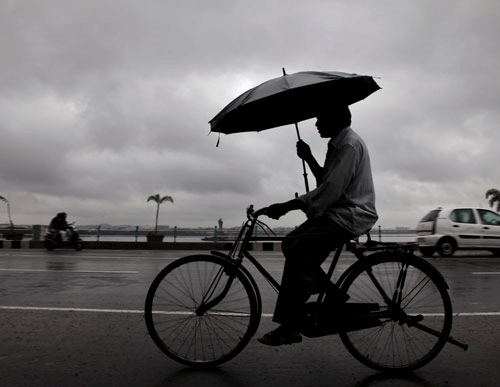After a smooth run in June, the steady march of the southwest monsoon has come to a screeching halt in the last two weeks.
For the country as whole, rainfall is four per cent deficient since June 1 as the monsoon appears to have entered into a break phase from June 25 onwards. The June 25-July 1 week saw 14 per cent dip in rainfall and the decline continued in the subsequent week.
Barely any states, except Bihar, Jharkhand and Gangetic West Bengal received any rain on Wednesday.
The forecast for the next five days are not at all encouraging as the break phase is likely to continue with farmers praying for rain. Twice in the last two months India Meteorological Department alerted about subdued monsoon in 2015, due to El Nino, a sea surface temperature anomaly that began in the Pacific but plays havoc with weather all over the world.
.But, India experienced a very wet June, thanks to a weather phenomenon called Madden Julian Oscillation that brings rainfall near the equator. “El Nino is full blown at the moment, triggering a lot of activities in the Pacific. The typhoons in the Pacific are killing the monsoon here. Only when typhoons are weaker, we have a chance of monsoon revival,” M Rajeevan, director of the Indian Institute of Tropical Meteorology, Pune told Deccan Herald.
As of now, this season seemed to be going the same way as 2002 when June was normal but rainfall dropped sharply in July because of which overall shortfall was 19 per cent short by the end of September, he said.
After that draught year, 2004 and 2009 witnessed sharp drop in monsoon rainfall. Ten out of the last 15 years between 2000 and 2014, ended as monsoon deficient years.
Last year, the shortfall was 12 per cent, which is the worst in five years.
In June IMD forecast “deficient” monsoon season in 2015, downgrading its April forecast of “below normal” rainfall.
According to the June forecast, the rainfall for the country as a whole is likely to be deficient with 88 per cent of the average rainfall. The weather forecast models showed below rainfall in all the four regions – northwest (85 per cent), northeast (90 per cent), central (90 per cent) and peninsular India (92 per cent), but the worst hit would be northwest India.

